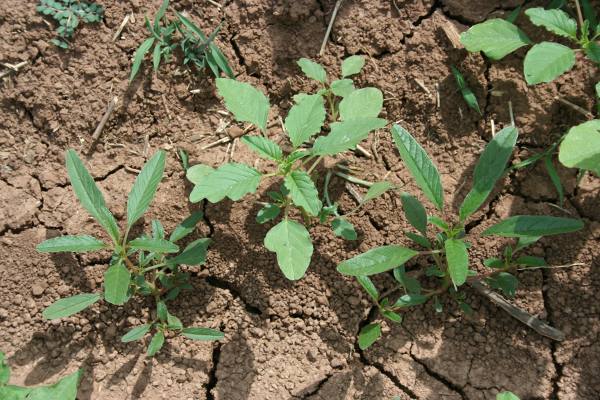May 15, 2012

Producers who rely on glyphosate-tolerant or “Roundup-resistant” crops probably should be expanding their weed-control toolbox, said Dr. Paul Baumann, Texas AgriLife Extension Service state weed specialist.
“We have a critical issue arising, in that common water hempin Central and Southeast Texas and Palmer amaranth pigweed in the High Plains have started showing signs of resistance to glyphosate herbicides,” Baumann said.
The common water-hemp resistance started showing up in 2005 with spotty infestations along the Gulf Coast and then it was hit or miss until 2010, with it occurring in other sites, he said.
Baumann saidbiotypes of certain weeds that are genetically different than others that may look the same and are tolerant to glyphosate are now appearing.
“If all else is killed out but that one plant is different, that is the start of the problem,” he said. “One common water hempplant could shed 400,000 to 500,000 seeds. So if that one weed is not killed, then later that year or the following year, there may be a whole patch of this resistant biotype of the weed.”
Baumann has been warning farmers for the past 10 years that they need to use a multi-herbicide program and not just rely on one product to do the job.
“We have to have more than one mechanism to manage the anomalies,” he said. “The resistant plants have probably always been there, but when you eliminate the competition with a highly effective herbicide like glyphosate, they begin to flourish.”
The problem can be even worse for producers who plant back-to-back Roundup Ready cotton and Roundup Ready corn, if they continue to use only glyphosate herbicide on either crop, Baumann said.
His recommendation is for producers to return to using soil-residual herbicides along with the glyphosate products. Trifluralin (Treflan) and pendamethalin (Prowl) are two of the available products that could be used in cotton programs. Some other approved products that also are soil-active herbicides are Staple, Cotoran, Dual and Warrant.
“All of those have a different mechanism of action than glyphosate and will effectively provide substantial control of either species,” Baumann said. “Roundup is too good on too many weeds to pull out of a program, but use it as one of the tools and not the only one.”
The other option, he said, is to switch to Liberty Link cotton, which is tolerant to the herbicide glufosinate (Liberty). This product has much of the same spectrum for weed control as glyphosate, but has a different effect on the weeds which makes it a sound alternative to glyphosate.
The application timing on pigweed, however, is much more critical in terms of weed size for treatment with Liberty, Baumann warned, so treatments must be applied to small (less than 4 to 5 inches) Palmer amaranth or common water hemp.
“The big issue, from a producer’s standpoint, is (that)by the time he recognizes or notices the resistance issue, he has probably already treated those weeds twice without any results and the weeds have gotten too big to treat it with any product,” he said. “The only alternative at that point is plowing or cultivating the middles or hand-pulling those weeds in the rows.”
Baumann said producers should start with the mix of herbicides, putting out a soil-applied pre-emergent or pre-plant incorporated herbicide without fail, and it will be more economical to management the weeds in the long run.
“I know farmers don’t want to spend more money fighting a problem they don’t yet have,” he said. “But my argument is, even if you don’t ever have the resistance problem, you are just ensuring that there is no competition to your crop from weeds from day one if you use a soil-active herbicide. Those first eight to 10 weeks are the most critical in keeping weed-free to prevent competition and yield loss.”
You May Also Like




